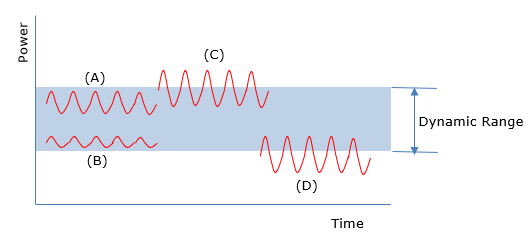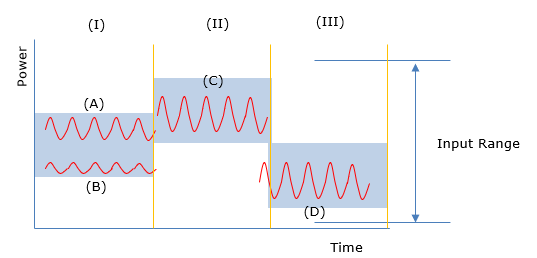|
RF |
||
|
Dynamic Range
Dynamic Range is a very wide and a little bit ambiguous term. It may vary with the context and the system you are referring to. (NOTE : you may get various professional definition of Dynamic Range in reference section. This note is very casual definition mostly based on my own experience and understanding).
My definition of Dynamic Range is 'a range of input power to a certain system (or component) in which the weakest and strongest signal can be detected simultaneously without change of any input configuration. The keywords in this definition is 'simultaneously' and 'without changing any input configuration'. It seems that this term is often confused with the term 'input power range'. Input Power Range usually refers to the range of the power in which the sytem can detect the power which is not necessarily simultaneously and input configuration change is also allowed. In most case, if you look into a datasheet of an equipment the input range is printed much wider than the dymaic range. Usually equipment vendor would not put the dynamic range information in the datasheet, but in the operation of the system there are many cases where the dynamic range is more important than the input power range.
For example, let's think of following situation. In this case, it is assumed that Dynamic Range of a system is set to be as in shaded area. As you would notice obviously, the signal (A) and (B) can be properly detected since they are all within the dynamic range and (C) would fail to be detected since the power is too high and (D) would also fail to be detected since the power is too low.
In some system (actually in most of the system (e.g, wireless communication call box) if it is not a single component, the system would be designed in such a way that you can shift the input level at different moment of measurement by manually or automatically. In this case, dynamic range itself does not change, but the position in power axis of the dynamic range can change. Due to this kind of design, those equipment states its Input range to be much wider than the dynamic range of the input chain. If you know of the rough power range of your input signal, you may configure your system to work in much more wider range than the dynamic range.
Reference
|
||

